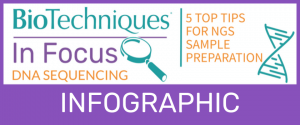Next-generation sequencing: in summary
What is next-generation sequencing?
Next-generation sequencing (often noted as NGS), describes the high-throughput technologies that can now determine the sequence of a given nucleic acid strand, such as DNA or RNA, in a matter of hours or days. These technologies have revolutionized genomics research as we know it. A number of different technologies that function via different working principles can be described by the term next-generation sequencing.
How does next-generation sequencing work?
Primarily, next-generation sequencing technologies operate through step-wise cycles of polymerase-based extension or oligonucleotide ligation that rely on piecing together short reads from fragmented DNA. However, the latest next-generation sequencing techniques are able to produce longer reads from much larger fragments of DNA nucleotide strands.
There are two well-established processes for the delivery of long-read sequencing. The first, nanopore sequencing, passes the strands through a protein nanopore and measures electrical current changes as each base passes through. A computer then decodes these changes to decipher the sequence. The second, single-molecule real-time (SMRT) sequencing, circularizes the strands and uses a polymerase to incorporate labeled bases that emit light on integration. The light is detected and used to measure nucleotide incorporation in real-time.
Next-generation sequencing technologies are constantly updating and new frontiers of development are breached seemingly annually. The latest developments involve single-cell sequencing to provide more accurate insight into the nucleic acids of specific cells during a particular phase or time point, avoiding ensemble average readings from a sample, which might be misleading. Further techniques for sequencing directly from a tissue or sample are also evolving – spatial sequencing – which provides researchers with a spatial resolution to their data and an insight to the cell’s composition and interactions within their natural environment.
The history of next-generation sequencing
These techniques have been developed in the two decades following the completion of the Human Genome Project in 2003. At this time, Sanger sequencing was used to piece together the human genome, in a project that took 13 years and cost roughly $2.7 billion. Since this time, the speed of sequencing has dramatically increased while costs have plummeted. In 2018, the cost to sequence a full human genome dropped below $1000 and now, an entire human genome can be sequenced in less than a day.
Featured
 The complete human genome sequence – a tale of a technical arms race
The complete human genome sequence – a tale of a technical arms race
Finally, new technology has allowed researchers to complete the human genome sequence – apart from the pesky Y chromosome.
 Talking Techniques | Whole-genome-sequencing: navigating the ‘diagnostic odyssey’ in rare disease research
Talking Techniques | Whole-genome-sequencing: navigating the ‘diagnostic odyssey’ in rare disease research
Discover the impact of whole-genome sequencing on rare disease diagnosis and treatment, from research to clinical outcomes, in this episode of Talking Techniques.
 Next-generation sequencing with Mirna Jarosz
Next-generation sequencing with Mirna Jarosz
In this BioTechniques ‘Behind the Technique’, we met Mirna Jarosz – Director of Next-Generation Sequencing Business Development at Integrated DNA Technologies (IA, USA) to discuss the impact NGS is having on cancer research, the best NGS technology innovations, the importance of collaborations and the future of NGS.
Get our top 5 tips for next-generation sequencing sample preparation in this helpful infographic from BioTechniques.
